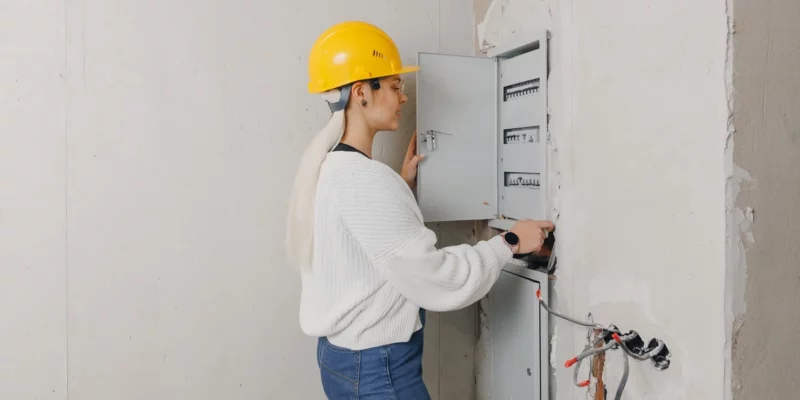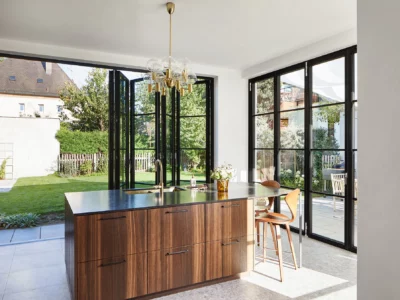A commercial building requires several components to be secure and efficient. Exposed wires, plumbing, valves, and fixtures can present a safety hazard and affect the general appearance of the building.
Installing a ceiling access panel drywall inlay is one of the most effective ways to make it easier to access building systems.
Preparing Tools
Installing a drywall access panel can be time-consuming and complicated, but having the right tools ready beforehand can make the installation process much easier and more efficient.
- Marker
- Level
- Set Square
- Tape Measure
- Drywall Saw
- Construction Adhesive (For Glued Panels)
- Drywall Anchors (For Screw-in Panels)
- Screwdriver (For Screw-in Panels)
Step 1 – Measuring
Accurately measuring the dimensions of an access door is essential to ensure a proper fit. With the help of a tape measure, get the exact size of the clear opening for your chosen access door.
Some access doors may need you to add a few quarters of an inch to your measurement to ensure the frame fits into the cut, so double-check the instructions of your access panel.
By taking accurate measurements and using quality materials, you can rest assured that your access door will be secure and fit perfectly in its designated area.
Step 2 – Marking
Use the set square and level to ensure accuracy when tracing your cutting lines for any project. Knowing how to use the set square and level properly is crucial in cutting straight lines.
With these two tools, you can guarantee that your lines will be as straight as they can be and that your finished project will look professional.
Step 3 – Cutting
One of the most critical steps in creating an access panel is cutting along the marked areas in drywall with a drywall saw. By carefully following the lines, you can ensure that your access panel frame fits snugly into your drywall and creates an attractive finished product.
Step 4 – Fitting
Depending on the design and size of the door, you may need to use construction glue or screws to attach the frame in place. Other drywall access panels may even require you to screw them directly into the wall or ceiling studs.
If the walls you intend to mount the access door are thin, ensure that you place flat shims between the flange and drywall to secure it without damaging the drywall.
Once you have decided on the best option, it is time to attach the frame to the rough opening you created in a previous step. Because you took the time to measure the lines and ensure they were level, you should be able to mount your access door in no time.
Step 5 – Filling Any Gaps
Access door installations may leave you with noticeable gaps. Perhaps the access door has a drywall bead along the flange. In these cases, you may need to use drywall compounds to fill the spaces between the housing and the wall.
This simple step can make a massive difference in providing a secure seal and ensuring that no air or moisture seeps into the space behind your walls and ceilings.
Step 6 – Finishing Touches
Painting is essential to any home renovation project, but achieving a perfectly matched finish can take time. Fortunately, some access door designs allow you to paint and match the rest of the surface quickly.
Once your adhesives are dried and your access door allows for it, you’re ready to start painting for a seamless look that’s sure to wow.
For an uninterrupted look, it is essential to sand down any drywall compound that you have used along the housing or flange. This step will allow a smooth finish once the paint goes on, ensuring your access door blends seamlessly with its environment.
Step 7 – Enjoy
Access panels have become an integral part of any building setup. They offer a secure and convenient way to control access to your premises, allowing you to keep out unwanted visitors and give permission to those who need it.
Correctly installing an access panel is a smart move that can help you reap the benefits of increased security and convenience. With the right access panel installed, you can rest assured that your premises are safe and secure while providing easy access for authorized personnel.










Comments